Participatory virtual environments

Alexander Whitley Dance Company
The Bartlett School of Architecture, University College London (UK)
Initiated in response to the Covid-19 lockdown, Digital Body uses motion capture technology to digitise sequences of choreography and makes them freely available online. CHAOTIC BODY brings together three composers and digital artists to collaborate with AWDC company on the creation of three short films and AR projects taking inspiration from chaos theory and the associated geometric patterns in nature.
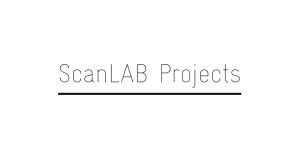
ScanLAB Projects HUB
The Bartlett School of Architecture, University College London (UK)
Unit 9 is a design studio within the undergraduate architecture programme at the Bartlett UCL. Led by Jessica In and Chee-Kit Lai, the Unit has developed a continued interest in the performative aspects of new technologies and their expressive potentials for the design and representation of architecture.
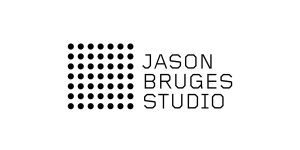
Jason Bruges Studio (UK)
The Bartlett School of Architecture, University College London (UK)
A curated selection of talks and 360 films that provide insight into the Studio’s process and practice. Normally inhabiting physical spaces, a number of the Studio’s installations are transformed and brought to a virtual audience for the first time.

Urbanism Beyond Cognition
The Bartlett School of Architecture, University College London (UK)
Developed by Research Cluster 14, the projects showcase how data allows designers to expand their remit by design at the scale of a country or how AI can give agency to non-human ecological and robotic actors.
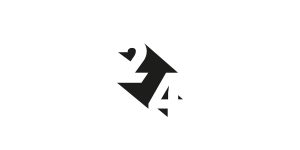
PG24
The Bartlett School of Architecture, University College London (UK)
PG24 is a group of architectural storytellers employing design, film, animation, drawing, virtual and augmented reality and physical modelling to rethink architecture’s relationship with time. We find inspiration in the dialogue between film and architecture, study their intertwined histories and seek the magical possibilities arising from their fusion.

re.riddle presents Falling Up
re.riddle, California, San Francisco (US)
re.riddle presents unique programming showcased in site-specific exhibitions and pop-up events worldwide. The itinerant gallery curates socially engaging and multidisciplinary exhibitions of contemporary art. Its mission is to contribute to the discourse on contemporary art in thought provoking and playfully subversive ways. Via new modes of production, reception and consumption, re.riddle places an emphasis on the whimsical, in hopes that art continues to arouse curiosity and promote an awareness of its profound impact on our daily surroundings and lives.

BSc Unit 9 HUB
The Bartlett School of Architecture, University College London (UK)
Unit 9 is a design studio within the undergraduate architecture programme at the Bartlett UCL. Led by Jessica In and Chee-Kit Lai, the Unit has developed a continued interest in the performative aspects of new technologies and their expressive potentials for the design and representation of architecture.
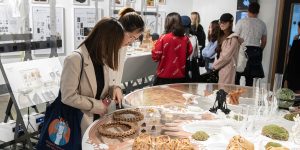
Luminous Crusting, Bio-ID
The Bartlett School of Architecture, University College London (UK)
Luminous Crusting is a project that questions perceptual and environmental ‘flatness’ of synthetic materials in comparison to extremely thin, but highly expressive and performative biogenic ‘micro-crusts’. These living, grown micro-crusts are highly ordered three-dimensional structures on a microscopic level. As such, they act not only as visual enhancers through deep iridescent appearance that changes with light and viewers movement, but as a living mediator between building tissue and the environment.

Automated Architecture Labs HUB
The Bartlett School of Architecture, University College London (UK)
AUAR Labs is the research laboratory co-directed by Mollie Claypool, Manuel Jimenez Garcia and Gilles Retsin at The Bartlett School of Architecture, previously known as Design Computation Lab. As part of AUAR Labs co-directors run the studio Research Cluster 4 (RC4) in MArch Architectural Design at The Bartlett focused on automated housing. The work of RC4 believes in the agency of architecture for change. Automation is not only about robots – it is first and foremost a design project.
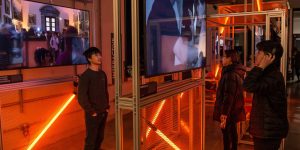
Design for Performance and Interaction / Interactive Architecture Lab HUB
The Bartlett School of Architecture, University College London (UK)
IAL Hub Space showcases student projects. The space takes a critical stance on developments across art, science, and technology to spearhead thinking in the 21st century. The projects presented are films and virtual prototypes. We have come to realize that now, more than ever, boundaries which define the arts and sciences no longer hold. To address the changing political, ecological, and technological landscapes, we engage in dialogues that are unfamiliar or uncomfortable.

CyberBallet
CyberRäuber (DE)
With the public rehearsals ending, the work will premiere in September 2020 at Ars Electronica Festival, in front of an audience that can join the performance via livestream.

The Garden of Curiosity
Mariano Sardón (AR), Mariano Sigman (AR/ES), Marcos Trevisán (AR), Bruno Mesz (AR), Intercambios Transorgánicos (AR), Sebastian Tedesco (AR), Leandro Garber (AR), Tomás Ciccola (AR), Lucía Kuschnir (AR), Josefina Schmipp (AR), Viviana Ramos Di Tommaso (AR), Diego De Benedetto (AR), Maximiliano Perez (AR)
The Garden of Curiosity is a “visual and sound objects” web support scenario. By clicking on specific objects, visitors can access audiovisual content corresponding to different Art-Science research projects linked to Muntref Arte y Ciencia.
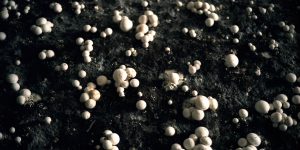
360º tour of Vigilantes (2018)
Iván Navarro (CL)
Immersive footage of Vigilantes, Museo del Hongo’s second exhibition at Museo de Arte Contemporáneo de Valdivia. Three species of mushrooms were grown from scratch and displayed in the museum’s underground vaults, with illumination from Navarro’s light sculptures, to create a biomimetic exhibition related to the cultivation of fungus gardens by ants and termites.
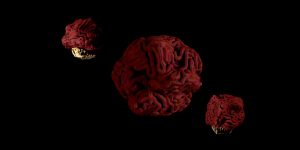
Local Fungi That Look Like Human Body Parts (2020)
Juan Ferrer (CL)
Digital installation composed of 3D models and a video that puts human body parts in conversation with a variety of mushrooms that grow in Chile. Our bodies are a fertile substrate for a complex microbiota that makes us who we are; this work aims to recreate a fungus garden within them, and to generate consciousness about the interconnection mycelium provides in nature.
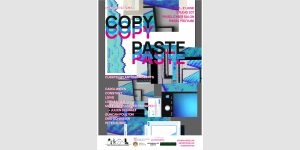
COPY PASTE Exhibition at Piksel Cyber Salon
The COPY/PASTE exhibition features the work of nine artists and art collectives who make copying a core aspect of their work. Taking the form of an online exhibition at Piksel Cyber Salon, it aims to show that copying is natural, and to re-think how we create/share/copy and paste. If you are an artist, then you have no doubt copied the work of others. This copying can range from using pages from a magazine in a collage to adopting the style of another artist, or simply being inspired by their work. This natural process of copying, taught to us at every stage of our artistic development, is burdened with a very complex and messy set of laws and social conventions which define and limit how we can use copying in our practices. They don't account for exceptions or nuances, and come from a historical world in which artworks were scarce physical objects, not translating well into a world in which culture is abundant and can be accessed and copied at will.
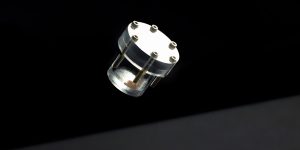
Digital Exhibition: Sojourner 2020
In 2019, the Space Exploration Initiative announced an open call to invite artists to submit artworks for an exciting ISS launch opportunity. After three rounds of reviews, nine groups of artists are selected to be on board Sojourner2020, an international art payload. For this year's Ars Electronica In Kepler’s garden online program, we created a digital spaceship to share the diverse portfolio from the initiative. Audiences are invited to immerse themselves in this digital world, walk around and encounter each other.
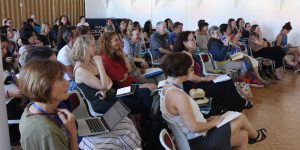
Live Panel: On Roots and Fruits
This panel is a collection of talks from some of the founding members of FEMeeting regarding the impact of the conferences and other community activities, as well as their perspective on the future development of women in art, science and technology.

FEMeeting Seeds
The seeds of our garden, the aromatic herbs and giant sequoias growing within FEMeeting the year throughout, are the members of our worldwide community. This part of our garden’s program includes video testimonies, images and sounds expressing the character and souls of some of the extraordinary women working today in art, science and technology.

Beside the Nibelungen bridge / Neben der Nibelungenbrucke
Matthew Gardiner (AU)
Festival, late, Golden Nicas delivered. A mixed hoard spill into Linz; eclectic electric musicians chattering in nihongo, intro-and-extro-verted artists and friends not seen for an age for the tyranny of distance. Drawn involuntarily to places warmer and happier than Hans in Glück, to a lone Würstlstand in Linz. Perhaps beside the Linzer Nibelungenbrucke.
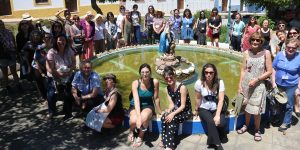
FEM Books
FEMeeting 2020 Garden has its own reading corners where you can find more information about the conferences and other meetings. Check out the abstracts for a concise idea on the rich variety of topics researched by the participants of FEMeeting gatherings.


